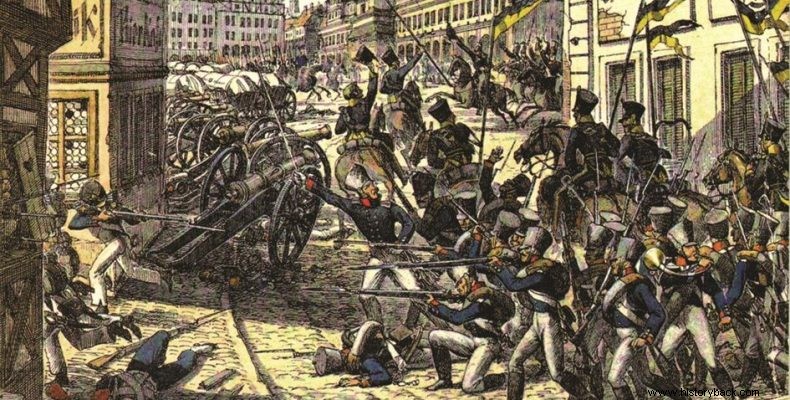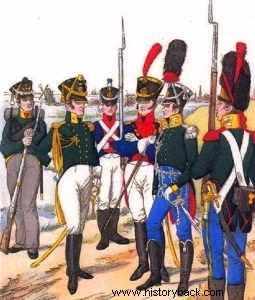
After the defeat of Austria in 1805 and Prussia in 1806, Napoleon proceeded with his plan to reorganize the Holy Roman Empire of the German Nation (Reich) based on French interests.
The many small German states were either integrated with each other or dissolved, forming, under French tutelage, together with the larger ones, the Confederation of the Rhine, as Napoleon called it. Each state or state that participated in the Confederation had the obligation to provide a small, even a military detachment, depending on its population and economic situation.
Among these states were the so-called Saxon Duchies of Saxe-Weimar, Saxe-Gotha, Saxe-Meiningen, Saxe-Coburg and Saxe-Hildburghausen. Based on their obligations to the French emperor, these small states had the obligation to contribute militarily to the French war effort.
These small German states, inversely proportional to their size – the largest, the Duchy of Saxe-Gotha, had a population of only 180,000 inhabitants – had a long tradition of war dating back to the Thirty Years' War. They always "produced" fine soul material, sought after for enlistment in the Austrian and Prussian Armies. The small duchies had fought against France from 1792 to 1806 and during this time their small armies were based on the Prussian organizational model.
Under Napoleon, however, the forces of all the small duchies united and formed the 4th Infantry Regiment of the Confederation of the Rhine, organized based on the now French organizational model.
The Constitution began to be formed from 1807, but its organization was consolidated in 1809, when the new Franco-Austrian war was declared. The 4th Regiment extended three battalions of infantry, two of the line and one of light infantry. Each battalion consisted of six companies, four of musketeers, one of archers and one of grenadiers, in the line battalions and one of elite hunters and five companies of hunters in the light battalion.
The total strength of the 4th Regiment was, in 1809, 2,368 men. The two line battalions were manned by men from the states of Saxe-Gotha, Saxe-Meiningen and Saxe-Coburg, while the light battalion was manned by men from Saxe-Weimar and Saxe-Hildburghausen.
Men from Meiningen and Gotha wore uniforms of French and Prussian design, with a blue tunic and white or light blue sashes. The skirmisher companies of the two line battalions were manned by men from the Duchy of Saxe-Coburg, who wore dark green uniforms. The men of the light battalion wore dark green tunics and gray aprons. The soldiers mostly wore shako hats, but some also wore dichos that were in stock. Thus the constitution displayed a "colorful" appearance.
The men carried French or Prussian muskets, except for the company of elite hunters who carried Prussian rifled rifles. Line infantry and snipers of line battalions carried bayonets and swords, while hunters only bayonets. Elite hunters carried saber bayonets, which could be used as both swords and bayonets, fitted to rifled rifles. The non-commissioned officers of the sniper companies of the line battalions also carried rifles with rifled barrels.
What differentiated, positively, the 4th Constitution from the other similar mixed constitutions of the small German states, was the common political, cultural and especially military tradition of the men of the states that made it up. Even under French tutelage, when they first operated in 1807, they fought effectively, even having their own officer in command, Colonel von Egglefstein, an excellent officer from the Duchy of Saxe-Weimar.
When the war of 1809 broke out with Austria the 4th Regiment was sent to fight against its old allies. Together with the 5th and 6th Rhine Regiments, together with Bavarian forces, it was sent to the region of Tyrol, against the insurgent inhabitants and the small Austrian forces there.
The 4th Regiment fought extremely well, especially the light battalion, due also to the nature of the fight – a small-echelon fight in mountainous terrain – winning the respect of even these supercilious Frenchmen. The Regiment continued to fight on the side of the French until 1813. The 4th Regiment was disbanded in Napoleon's Russian campaign. Parts of it were regrouped in 1813 and fought against the French, participating in the anti-French coalition, until the end of the Napoleonic Wars.

